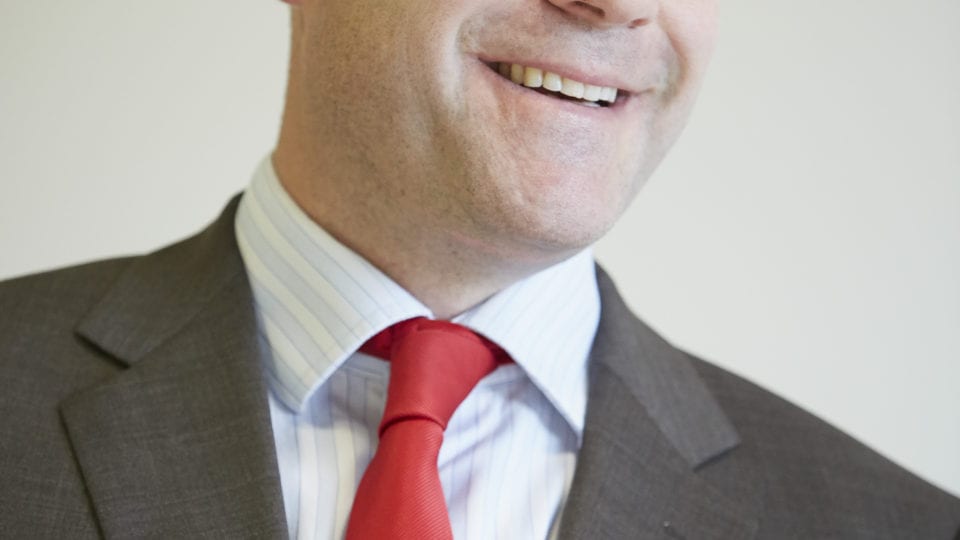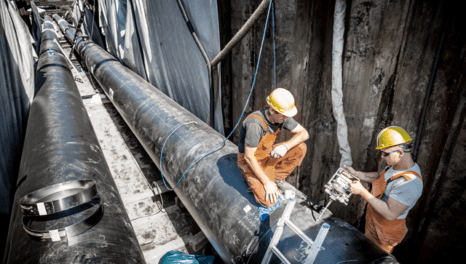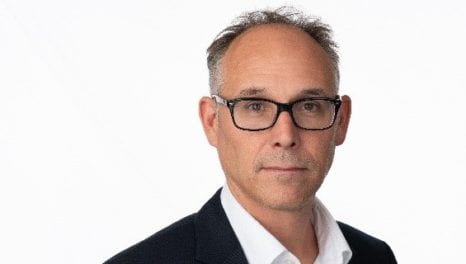Supply chain evolution
The UK's energy sector faces significant challenges with the proliferation of new technology, shifting consumer expectations, sustainability targets and regulatory uncertainty. So how is the supply chain adapting to meet the changing needs of clients and the wider industry? Costain's Cameron Tonkin - sector director, power - speaks to Network.
7th October 2018 by Networks

Q. How has the industry changed over the last 10 years?
A. Carbon emissions reductions have been achieved, for example via the growth in renewable electricity generation particularly in the last two years. Last April the UK had its first day without coal-fired power since the Industrial Revolution, which is significant as it indicates how much progress the country has made.
Despite this progress, there are still challenges for the industry, particularly around how we will continue to cut emissions and ensure a utilities network that is ‘match fit’ for the rise in electric vehicles (EVs), as well as the increasing home energy storage and generation. We’re seeing a rise in what is dubbed as ‘prosumers’, where consumers are also becoming producers and wanting to sell that energy back. That’s driving the need for an agile and flexible energy system.
Q. What are the major disrupters for the energy market in 2019?
A. The major disrupters are driven around new technology and what consumers are using energy for. Firstly, there is the rise in EVs and renewable heat that is driving the need for a resilient and agile electricity network that can adapt and cope with changing demand for power, whether that is how users want to draw down that power or maybe want to sell it back. Network balancing is critical and technology solutions will enable that.
Aside from EVs and home generation, we’ll also see continued digital connectivity across our industry. The consumer will become increasingly connected with the producer. More consumers will be enabled to pick and choose their energy provider, and their energy tariffs and what they do with their energy.
Q. How is Costain supporting its clients during this time of change?
A. At Costain we’re providing our clients with smart infrastructure solutions. We’re helping utilities prepare their business case for RIIO phase 2 around cost forecasting and predictability of maintaining network assets, including technology led predictive maintenance solutions. Also, our smart delivery platforms are helping clients with improved transparency on cost and time forecasts for capital investments on major schemes.
Another area we’re focused on at Costain is helping clients with engineering solutions to optimise and upgrade assets. We invest heavily in research and development to continue to drive innovation. This is where Ofgem plays a key role in stimulating the industry with innovation investments and allowances that encourage collaboration and development activities with universities. This means working in partnership with our clients to come up with new ways of working. Across Costain we have 24 full-time PhD students combined with significant research and development investment across the UK with numerous leading universities. This is all focused on unlocking knowledge and addressing industry challenges.
Q. How is the supply chain adapting to suit this new technology world?
A. We’re seeing a supply chain that is investing in new areas with new start-ups coming to market. For example, technology specialists. The supply chain is also adapting to a more integrated delivery model, which offers efficiencies such as reduced learning curves and cost by operating across all parts of a project lifecycle. At Costain, we’ve had growth in consultancy and it’s our clients that are taking us there. In other words, an organisation that not only provides advice but also can stand behind this in delivery.
We’re also seeing the traditional energy sector and the transport market coming closer together. This is principally driven by the rise in EVs and renewables creating the need for reliable and resilient utility networks. We’re increasingly working with EVs in terms of ensuring resilient utility infrastructure.
Q. What will be the impact of RIIO2 and how is Costain preparing to support its clients during this change?
A. I don’t see that RIIO2 is a major change from RIIO1 around ensuring networks have enough revenue to run a network whilst keeping costs down for consumers. It is clear that Ofgem are aiming for a more challenging price control period with incentives around consumer satisfaction including, simpler price models, responding to changes in how networks are used, innovation and fair returns to shareholders.
At Costain, we’re working with clients to help them prepare business plans as part of RIIO2. This involves cost forecasting around true costs of investing and delivering major schemes. To have that data at our fingertips is really part of our DNA. That critical information gives our utility clients real transparency, as well as clear insight on costs and logistics to deliver schemes.
Q. How are these solutions in line with Project 13?
A. We’ve been working with our clients and the Institution of Civil Engineers to help develop and apply Project 13 (P13) in terms of what it means for delivery. There are many elements around the P13 methodology which are already clear, such as collaborative approaches, transparency and trusted relationships. Our focus has been on how that can be monetised and how it works within a commercial model across a project lifecycle and supply chain.
Q. What headline areas would you advise clients to focus on ahead of the new year?
A. We’re going to see Ofgem continuing to refine the RIIO2 regulatory framework and no-doubt utilities will continue to develop and refine their business plans.
Heading towards 2019, an opportunity is the network innovation allowances. As an industry, we need to continue focusing on research, development and innovation. That will help us unlock some of the challenges that will only continue to increase, particularly with the rise of EVs and digital connectivity, as well as the continued challenges to meet the needs of the regulatory framework.
Another area is continuing to shape and refine the P13 methodology and how it will work. I would encourage utilities to involve their supply chain in that discussion. Particularly for cost analysis, procurement and logistical considerations for delivering major schemes of work.
Comments
Login on register to comment
Related content

Heat
Electric storage heating – a Cinderella solution
Why has electric storage heating been overlooked as we seek to tackle decarbonising domestic heat?

Heat
Prospects bright for landmark East London Heat Network
New Vattenfall-Cory partnership marks step towards record-breaking heat network capable of serving over 10,000 homes

Heat
New construction director at Switch2 Energy
Appointee brings experience from Vattenfall and Eon
Related supplier content

Power
Load patterns and lockdown: how Covid-19 is impacting electricity networks
Insights into dynamics on the low voltage network as the outbreak unfolds

Downloads
Protect electrical equipment from insulation failure
Insulation faults are a major cause leading to the eventual failure of electrical equipment. Partial discharge (PD) is a very reliable indicator of developing insulation faults. Regular PD testing allows users to detect and analyze PD activity

Heat
How E.ON. is helping the City of London become a zero emissions city
Discover Citigen. Deep in the heart of our bustling capital